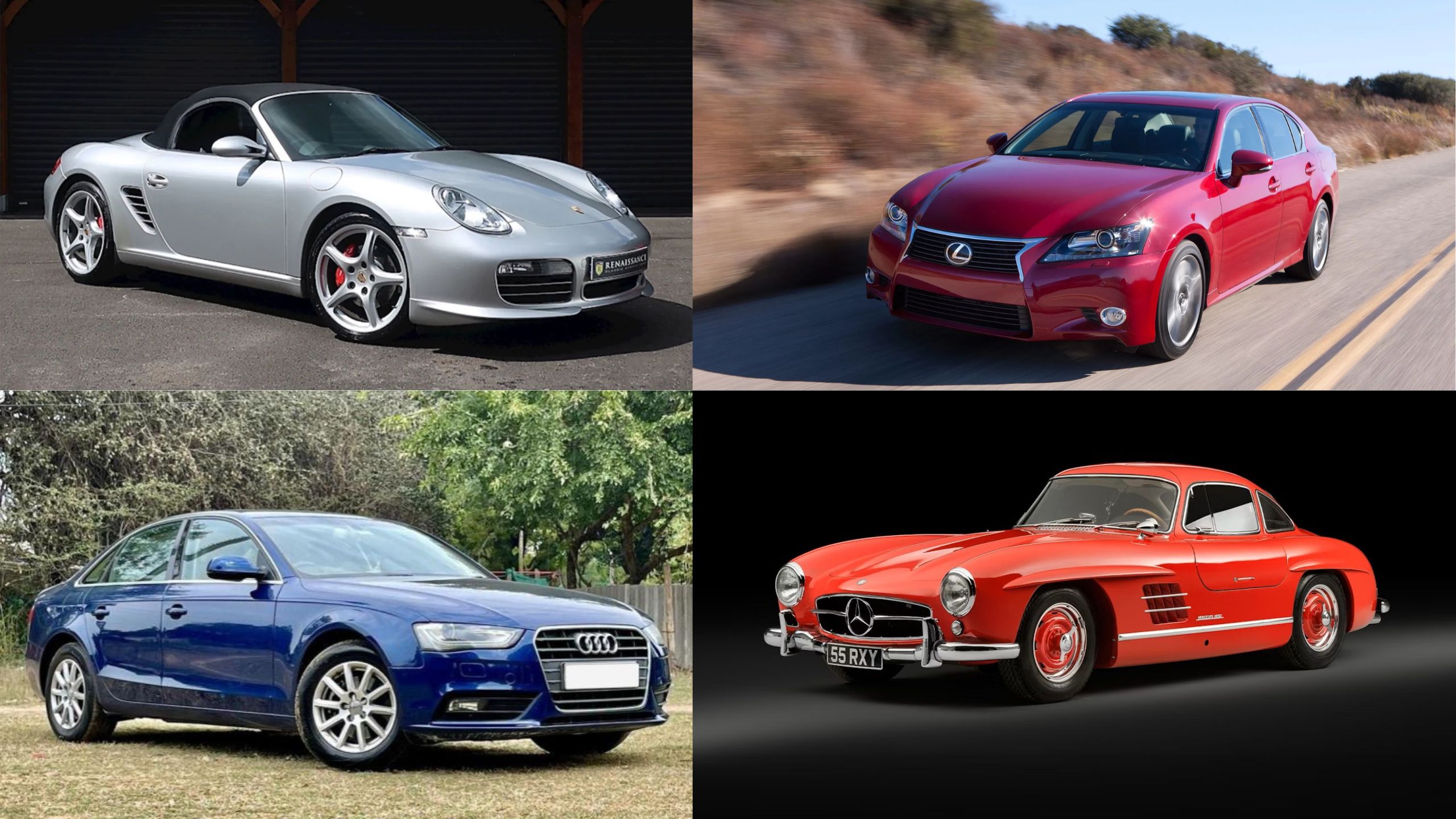In luxury automotive ownership, the fear of astronomical maintenance expenses often lurks in the background, casting a shadow over the excitement of driving a premium vehicle.
Many automotive enthusiasts and potential buyers assume that high-end cars are synonymous with sky-high repair bills and constant maintenance headaches.
However, this comprehensive guide shatters that misconception by revealing ten premium vehicles that combine luxury, performance, and remarkable reliability.
Our carefully curated list goes beyond the typical narratives of expensive European sports cars and explores brands and models that offer an unexpected balance of sophistication and economic practicality.
These vehicles prove that you don’t have to compromise on quality or drain your bank account to maintain a premium driving experience.
From Japanese engineering marvels to American luxury sedans and German precision machines, we’ll look into the specifics of each model that makes them stand out in terms of low repair costs.
What sets these cars apart is not just their initial build quality, but also their long-term durability, readily available parts, straightforward maintenance requirements, and reputation for minimal unexpected repairs.
Whether you’re a seasoned car collector, a first-time luxury car buyer, or simply someone who appreciates intelligent automotive engineering, this guide will provide insights that challenge traditional perceptions about premium vehicle ownership and maintenance.
1. Lexus LS 460
The Lexus LS 460 epitomizes Japanese engineering excellence, delivering a luxury sedan that defies the traditional costly maintenance narrative.
Introduced in 2007, this flagship model from Toyota’s luxury brand has consistently demonstrated an extraordinary commitment to reliability and cost-effective ownership.
At the core of the LS 460’s remarkable dependability is Toyota’s legendary engineering philosophy. The 4.6-liter V8 engine represents a pinnacle of mechanical precision, designed to deliver exceptional performance while minimizing potential mechanical failures.
Unlike many European luxury competitors that require specialized and expensive servicing, the Lexus LS 460 offers maintenance simplicity that translates directly into lower long-term costs.
Consumer reports and extensive reliability studies repeatedly highlight the LS 460’s minimal repair requirements. Its meticulously engineered components virtually eliminate the typical anxiety associated with luxury vehicle ownership.
The electrical systems, transmission, and major mechanical components exhibit extraordinary longevity, with many units effortlessly surpassing 200,000 miles without significant issues.
Parts availability further amplifies the LS 460’s economic advantage. Being part of the Toyota family means replacement components are not only readily available but also reasonably priced.
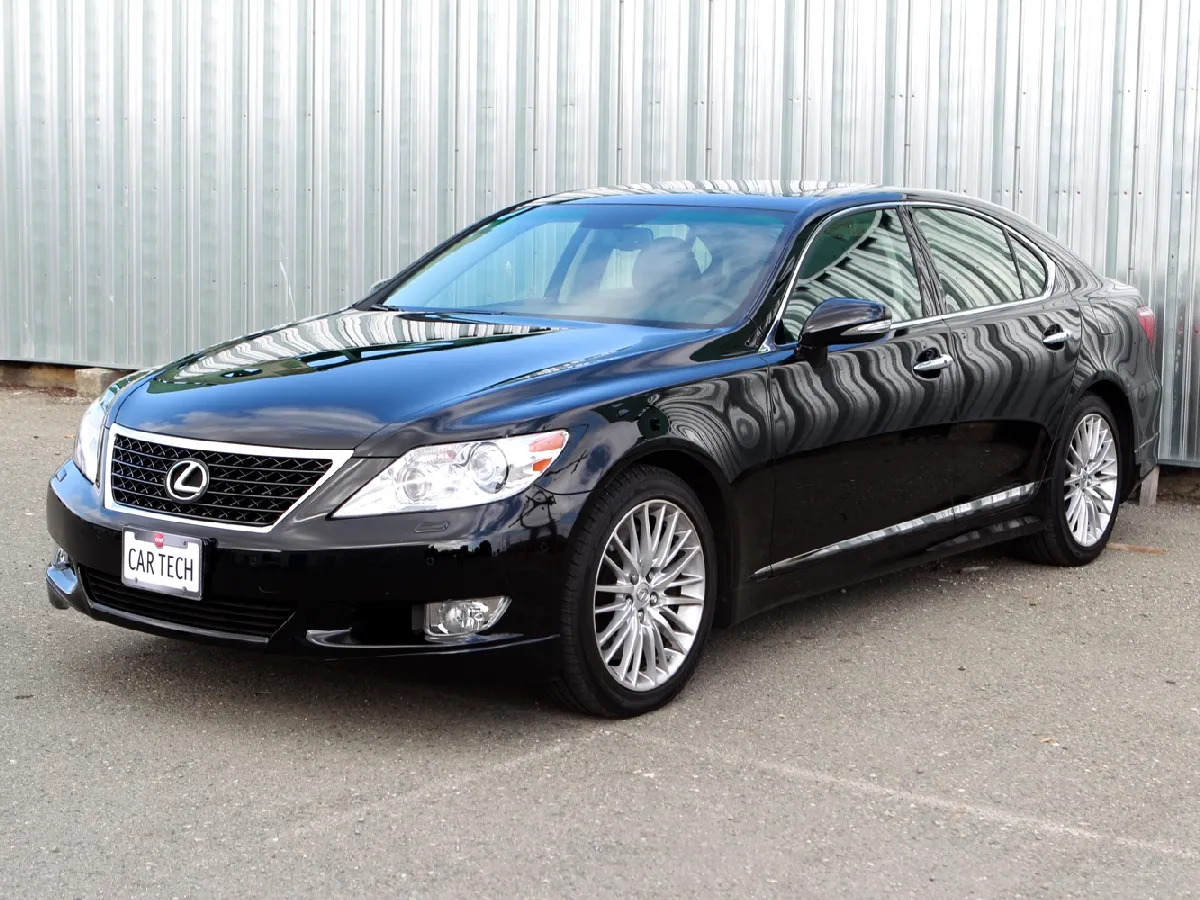
Where European luxury brands might charge astronomical prices for a single component, Lexus maintains an accessible and cost-effective parts ecosystem.
The interior build quality reinforces the car’s durability narrative. Premium materials are selected not merely for aesthetic appeal but for their ability to withstand years of use without degradation.
Leather upholstery, dashboard components, and electronic interfaces are engineered to maintain functionality and appearance over extended periods, reducing the likelihood of costly interior repairs.
Insurance providers and extended warranty companies recognize the LS 460’s exceptional reliability. Many offer more favorable terms and lower premiums, acknowledging the statistically proven low risk of significant mechanical failures.
This translates to additional long-term financial benefits beyond just repair costs. From a depreciation perspective, the LS 460’s reputation for reliability helps it maintain value remarkably well.
Potential buyers in the used market eagerly seek these vehicles, understanding they’re acquiring a luxurious sedan with a proven track record of minimal maintenance complications.
2. Acura TL
The Acura TL represents a pinnacle of reliable luxury, bridging the gap between performance and economic practicality with remarkable engineering precision.
Produced between 2004 and 2014, this mid-size luxury sedan emerged as a standout model in Honda’s luxury lineup, challenging preconceptions about maintenance-intensive premium vehicles.
Honda’s legendary engineering philosophy shines through every aspect of the Acura TL’s design. The robust 3.5-liter V6 engine, a hallmark of the model, delivers exceptional performance while maintaining an extraordinary level of reliability.
Unlike many European luxury competitors that require frequent specialized servicing, the TL offers a maintenance profile that is both straightforward and cost-effective.
The powertrain’s durability is particularly noteworthy. Extensive long-term studies demonstrate that many TL models effortlessly surpass 200,000 miles with minimal major repairs.
The transmission, often a critical failure point in luxury vehicles, stands out as a testament to Honda’s engineering prowess.
Precise manufacturing tolerances and carefully selected materials ensure that this critical component maintains its performance and integrity far beyond typical expectations.
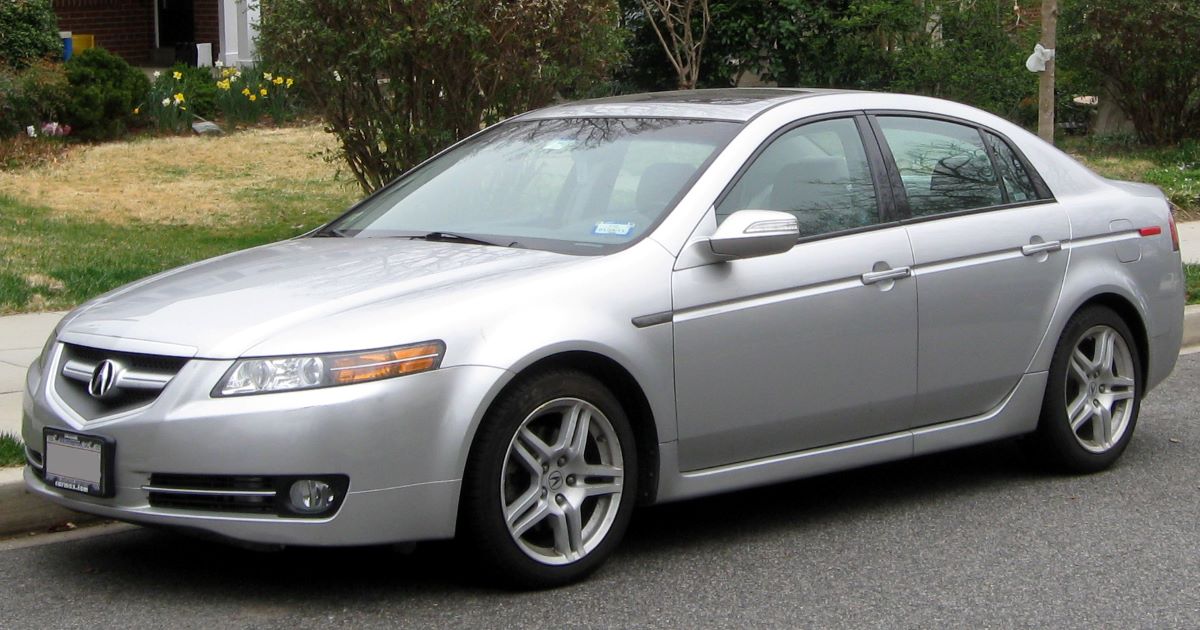
Electrical systems in the Acura TL represent another highlight of its low-maintenance profile. Honda’s approach to electronic design prioritizes simplicity and reliability over unnecessary complexity.
This strategy minimizes the risk of expensive electrical failures that plague many luxury vehicles, translating to more predictable and lower maintenance costs.
Parts availability further enhances the TL’s economic advantage. Being part of the Honda family means that replacement components are readily available, reasonably priced, and can be serviced by a wide network of mechanics.
This accessibility stands in stark contrast to more exotic luxury brands that require specialized dealership interventions at premium prices.
The interior build quality reinforces the vehicle’s reputation for durability. Premium materials are selected not just for aesthetic appeal but for their ability to withstand years of use without significant wear.
Leather upholstery, dashboard components, and electronic interfaces maintain their functionality and appearance, reducing the likelihood of costly interior repairs.
Insurance providers and extended warranty companies recognize the Acura TL’s exceptional reliability.
Many offer more favorable terms and lower premiums, acknowledging the statistically proven low risk of significant mechanical failures. This translates to additional long-term financial benefits beyond just repair costs.
From a depreciation perspective, the TL maintains its value remarkably well. Potential buyers in the used market actively seek these vehicles, understanding they’re acquiring a luxury sedan with a proven track record of minimal maintenance complications.
The combination of Honda’s reputation for reliability and the TL’s premium features creates a compelling ownership proposition that continues to attract discerning buyers.
3. Infiniti G35/G37
Nissan’s luxury brand Infiniti has consistently delivered performance-oriented vehicles that challenge traditional maintenance cost paradigms, with the G35 and G37 models standing as prime examples of affordable luxury.
These sporty sedans and coupes offer a compelling combination of Japanese engineering reliability and premium driving experience at a fraction of the typical luxury car maintenance cost.
The VQ-series V6 engines powering these models represent a pinnacle of engineering excellence. Renowned for their durability and straightforward maintenance requirements, these powertrains demonstrate an exceptional ability to deliver performance without compromising reliability.
Unlike more complex European engine designs that require specialized tools and expertise, Infiniti’s engines can be serviced relatively easily and economically.
Mechanical durability is a hallmark of the G35 and G37 models. Carefully engineered components and precise manufacturing tolerances minimize potential failure points. Many owners report seamless performance well beyond 150,000 miles, with only routine maintenance required.
The chassis and suspension systems are particularly noteworthy, offering a perfect balance between sporty handling and long-term reliability.
Nissan’s approach to parts availability significantly contributes to the low repair costs of these models. Unlike some luxury brands that charge premium prices for replacement components, Infiniti parts are comparatively affordable and widely available.
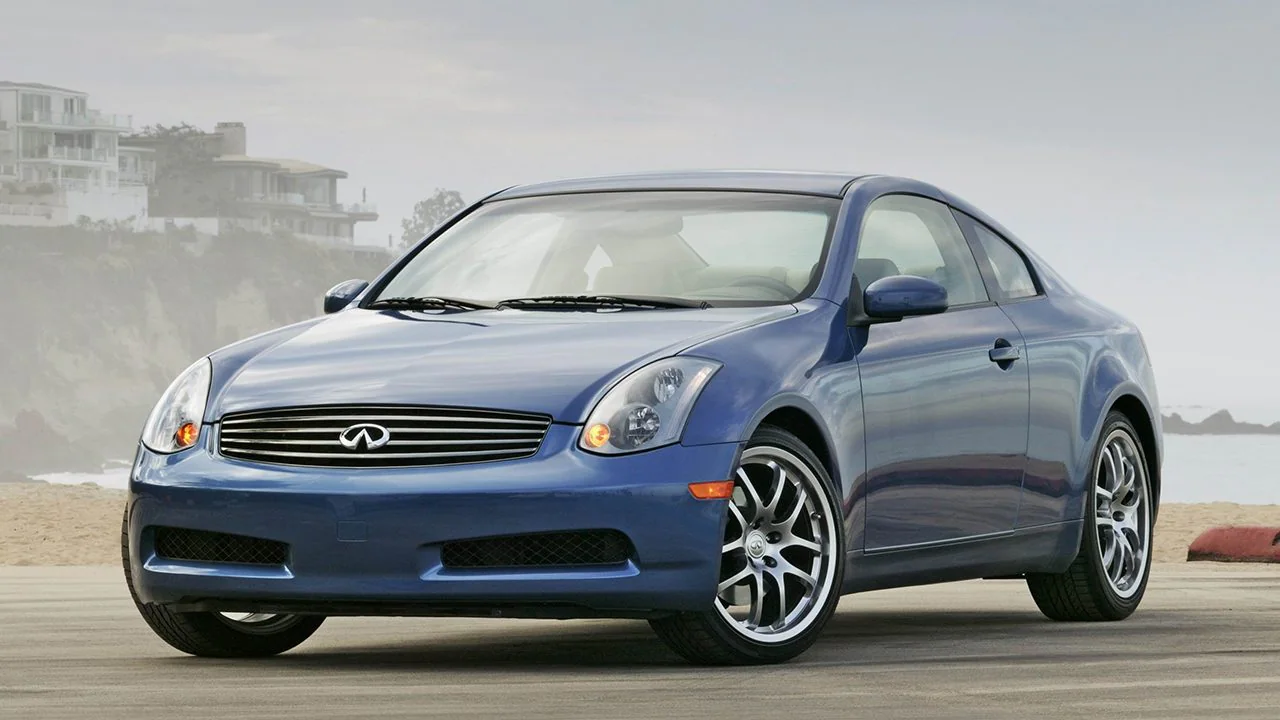
This accessibility means that even major repairs or component replacements don’t necessarily translate to astronomical expenses.
The electrical systems in the G35 and G37 demonstrate a thoughtful approach to design and reliability. Nissan engineers prioritized simplicity and functionality, minimizing the risk of complex and expensive electrical failures.
This approach provides owners with more predictable maintenance experiences and lower long-term ownership costs.
Insurance providers and extended warranty companies recognize these models’ reliability. Many offer more favorable terms and lower premiums, acknowledging the statistically proven low risk of significant mechanical failures.
This translates to additional financial benefits beyond basic repair costs. From a depreciation perspective, the G35 and G37 maintain their value remarkably well.
Potential buyers in the used market actively seek these vehicles, understanding they’re acquiring a performance-oriented luxury car with a proven track record of minimal maintenance complications.
The combination of sporty performance, reliable engineering, and economic maintenance makes the Infiniti G35 and G37 standout choices for those seeking a premium driving experience without the traditional luxury car maintenance headaches.
4. Lexus IS 250/350
The Lexus IS series represents a pinnacle of compact luxury engineering, delivering an exceptional balance of premium features, performance, and remarkably low long-term maintenance costs.
Introduced in the mid-2000s, these models have consistently proven themselves as paragons of dependable automotive design, challenging traditional perceptions about luxury vehicle reliability.
Toyota’s meticulous manufacturing processes shine through every aspect of the Lexus IS. Whether equipped with the 2.5-liter V6 in the IS 250 or the more powerful 3.5-liter V6 in the IS 350, these powertrains demonstrate extraordinary durability.
Precise engineering, high-quality materials, and carefully designed manufacturing processes minimize potential wear and failure points.
The electrical systems represent another triumph of intelligent design. Unlike many luxury competitors that incorporate overly complex electronic architectures, Lexus maintains a more straightforward and reliable approach.
This philosophy translates to fewer potential failure points and more predictable maintenance requirements, ultimately reducing long-term repair costs.
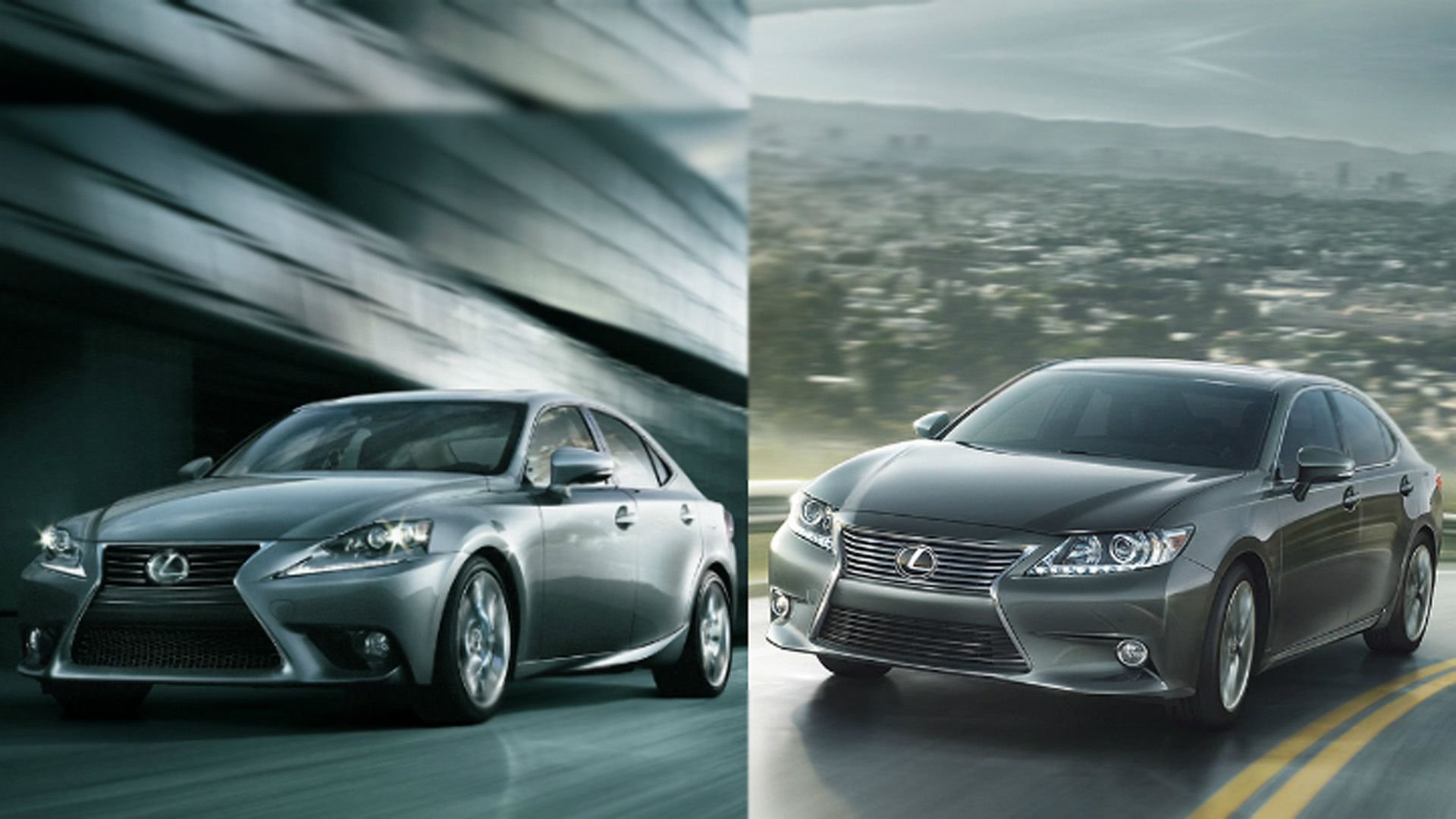
Transmission performance stands out as a particular strength of the IS series. Many owners report seamless operation well beyond 150,000 miles, with minimal required interventions.
The carefully engineered drivetrain components demonstrate an exceptional ability to maintain performance and reliability over extended periods.
Parts availability further enhances the IS models’ economic advantage. Being part of the Lexus/Toyota family means replacement components are readily available, reasonably priced, and can be serviced by a wide network of mechanics.
This accessibility stands in stark contrast to more exotic luxury brands that require specialized and expensive interventions. The interior build quality reinforces the vehicle’s reputation for durability.
Premium materials are selected not just for aesthetic appeal but for their ability to withstand years of use without significant wear. Leather upholstery, dashboard components, and electronic interfaces maintain their functionality and appearance, reducing the likelihood of costly interior repairs.
Insurance providers and extended warranty companies recognize the Lexus IS’s exceptional reliability. Many offer more favorable terms and lower premiums, acknowledging the statistically proven low risk of significant mechanical failures.
This translates to additional long-term financial benefits beyond just repair costs. From a depreciation perspective, the IS series maintains its value remarkably well.
Potential buyers in the used market actively seek these vehicles, understanding they’re acquiring a compact luxury sedan with a proven track record of minimal maintenance complications.
Also Read: 10 Used Bentleys and Rolls-Royces That Are More Reliable Than Expected
5. Cadillac CTS
The Cadillac CTS represents a bold reimagining of American luxury engineering, challenging long-standing perceptions about domestic luxury car maintenance costs.
Produced between 2003 and 2014, these models demonstrated that premium American automotive design could compete with international rivals in terms of dependability and economic maintenance.
General Motors invested significant engineering resources in developing the CTS’s powertrain and structural components, focusing on durability and simplified maintenance.
The V6 engines, particularly in later models, were designed using advanced manufacturing techniques that improved reliability and reduced potential failure points.
Unlike some European luxury sedans that require complex and expensive servicing, the CTS could be maintained through a broader network of mechanics at more reasonable costs.
The vehicle’s electrical systems represent another area of impressive engineering evolution. While earlier luxury car electronics were often complex and prone to failures, Cadillac implemented more robust and streamlined electrical architectures in the CTS.
This approach minimized potential electrical issues that could lead to expensive repairs, making the car more economically viable in the long term.
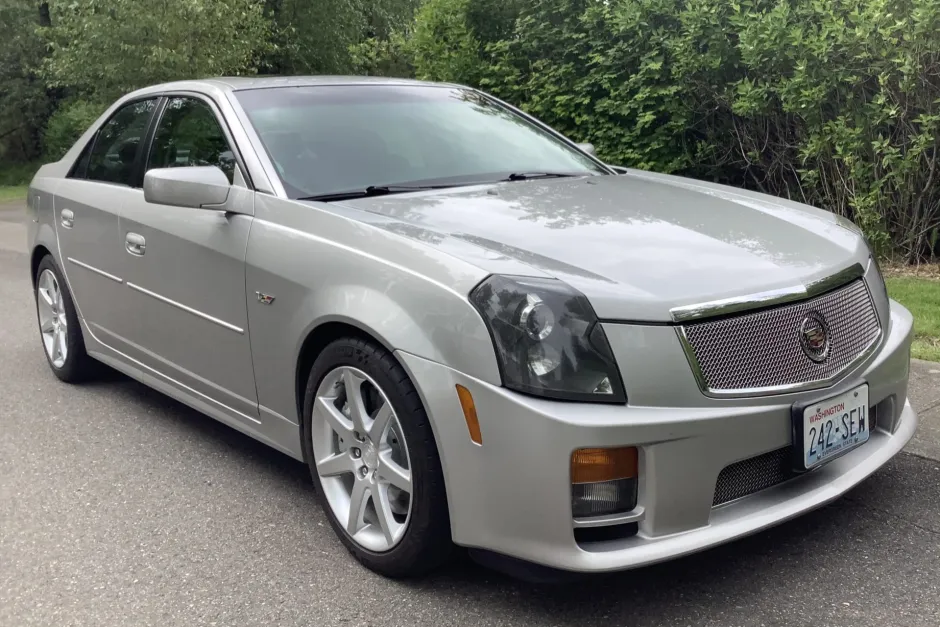
Parts availability and pricing further contribute to the CTS’s low repair costs. As a domestic model, replacement components are more readily available and typically less expensive compared to imported luxury brands.
This accessibility means that even significant repairs or component replacements don’t necessarily translate to budget-breaking expenses.
The suspension and chassis design demonstrates a commitment to durability and reduced maintenance requirements.
Carefully engineered components minimize wear and tear, providing owners with a more predictable and economical ownership experience. Many owners report seamless performance well beyond 150,000 miles with only routine maintenance.
Interior build quality reinforces the CTS’s reputation for reliability. Premium materials are selected for their ability to withstand years of use without significant degradation.
Leather upholstery, dashboard components, and electronic interfaces maintain their functionality and appearance, reducing the likelihood of costly interior repairs.
Insurance providers and extended warranty companies recognize the Cadillac CTS’s improving reliability. Many offer more favorable terms and lower premiums, acknowledging the vehicle’s reduced risk of significant mechanical failures.
This translates to additional long-term financial benefits beyond basic repair costs. From a depreciation perspective, the CTS maintains its value more effectively than many expected.
Potential buyers in the used market actively seek these vehicles, understanding they’re acquiring an American luxury sedan with a proven track record of improving reliability and manageable maintenance costs.
6. Mercedes-Benz E-Class (W212 Generation)
The W212 generation Mercedes-Benz E-Class, produced between 2009 and 2016, emerged as a surprising beacon of reliability in the luxury automotive world.
Breaking away from Mercedes’ historical reputation for complex and expensive maintenance, this generation represented a strategic pivot towards more accessible and economically sensible vehicle ownership.
Mercedes implemented a revolutionary approach to engineering during this generation, focusing on simplifying complex systems and improving component durability.
The powertrain options, ranging from efficient four-cylinder engines to robust V6 configurations, were designed with unprecedented precision and fewer potential failure points.
This methodical approach significantly reduced the likelihood of expensive unexpected repairs that had plagued previous generations.
The electrical systems underwent a remarkable transformation in the W212 E-Class. Recognizing the maintenance challenges of overly complex electronics, Mercedes engineers worked to create more reliable and easily serviceable systems.
Simplified wiring architectures and more robust component selections meant fewer potential electrical failures and more predictable maintenance costs.
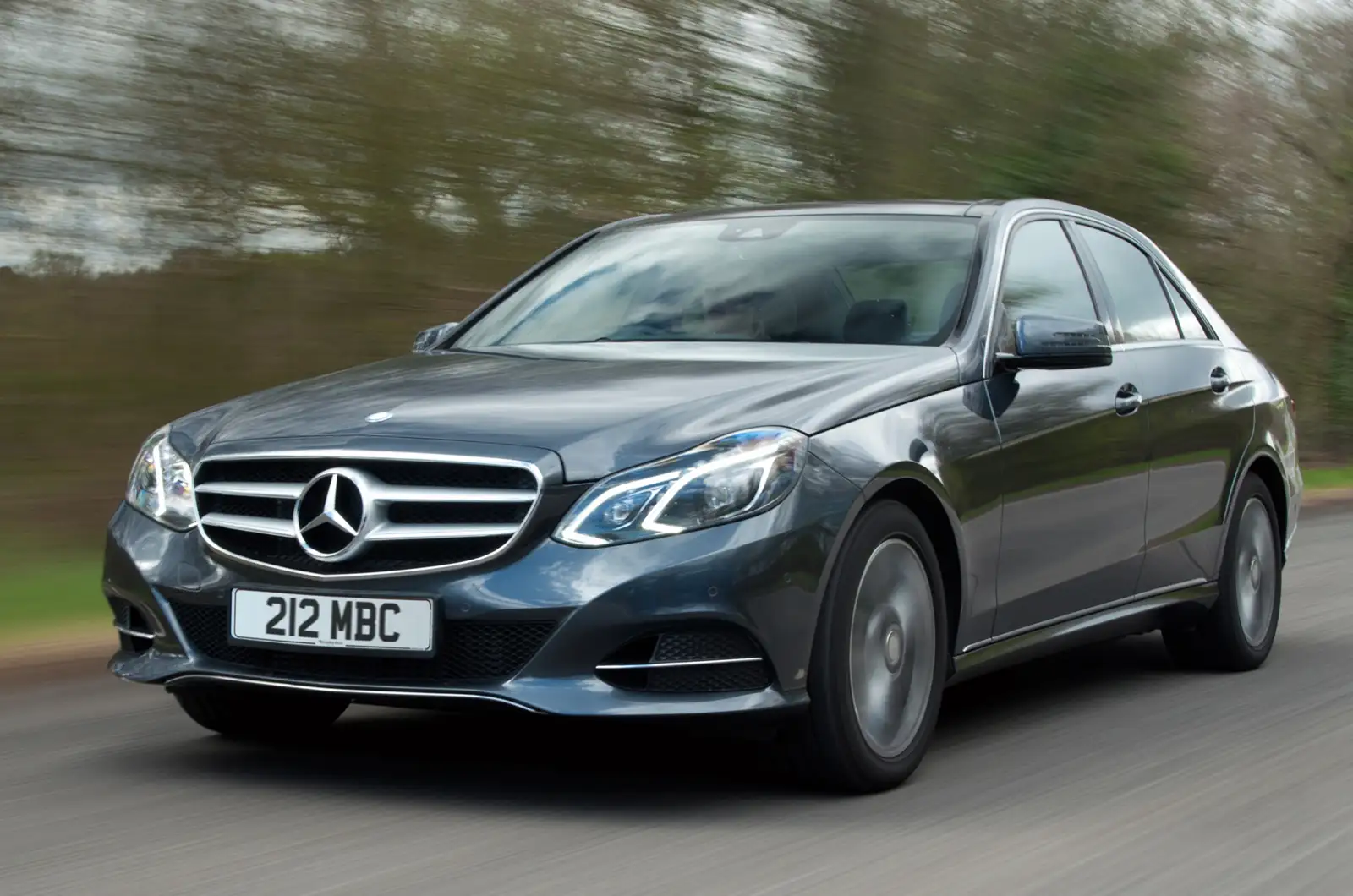
Parts availability saw significant improvements during this generation. Mercedes expanded its parts distribution network, making replacement components more accessible and slightly more affordable.
While still more expensive than some Asian luxury brands, the W212 generation represented a more economically sensible option within the Mercedes lineup.
Transmission performance stood out as a particular strength. The carefully engineered seven-speed automatic transmission demonstrated exceptional durability, with many owners reporting smooth operation well beyond 150,000 miles.
Precise manufacturing tolerances and advanced lubrication systems minimized wear and potential failure points.
The suspension system received similar engineering attention. Advanced aluminum components and carefully designed mounting points reduced wear while maintaining the brand’s legendary ride quality.
This approach meant fewer suspension-related repairs compared to previous generations. Interior build quality continued to be a hallmark of the E-Class. Premium materials were selected not just for aesthetic appeal but for their ability to withstand years of use without significant degradation.
Leather upholstery, dashboard components, and electronic interfaces maintained their functionality and appearance, reducing the likelihood of costly interior repairs.
Insurance providers and extended warranty companies recognized the W212’s improved reliability. Many offered more favorable terms and lower premiums, acknowledging the statistically proven reduced risk of significant mechanical failures.
This translated to additional long-term financial benefits beyond basic repair costs. From a depreciation perspective, the W212 E-Class maintained its value more effectively than many luxury competitors.
Potential buyers in the used market actively sought these vehicles, understanding they were acquiring a German luxury sedan with a proven track record of improved reliability and more manageable maintenance expenses.
7. Audi A4 (B8 Generation)
The B8 generation Audi A4, spanning from 2008 to 2015, represented a pivotal moment in Audi’s engineering evolution.
This model challenged traditional perceptions about German luxury car maintenance by offering a more reliable and economically sensible ownership experience that surprised both critics and consumers alike.
Volkswagen Group’s engineering investments focused on creating more robust and reliable powertrains.
The TFSI engine technologies, combined with advanced manufacturing techniques, resulted in vehicles that could maintain performance and reliability over extended periods.
Compared to previous generations, these models demonstrated significantly fewer significant mechanical complications.
Electrical systems benefited from more standardized and simplified designs. Audi worked strategically to reduce the complexity of electronic components, making them more reliable and easier to diagnose and repair.
This approach significantly reduced the potential for expensive electrical system failures that had plagued earlier Audi models.
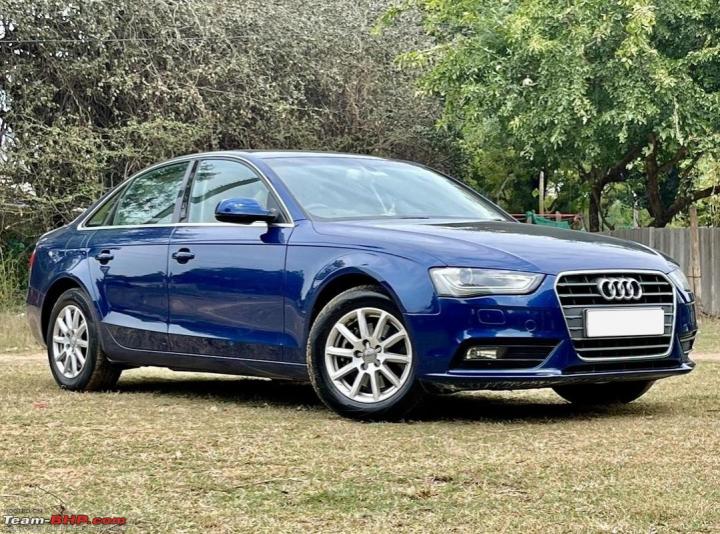
The transmission represented another engineering triumph. Carefully designed with precise manufacturing tolerances, the eight-speed automatic and manual variants demonstrated exceptional durability.
Many owners reported seamless performance well beyond 150,000 miles, with minimal required interventions.
Parts availability expanded during this generation. Audi worked to create a more comprehensive parts distribution network, making replacement components more accessible.
While still more expensive than some Asian luxury brands, the B8 generation A4 represented a more economically sensible option within the German luxury segment.
Suspension engineering received particular attention. Advanced aluminum components and carefully designed mounting points reduced wear while maintaining the brand’s renowned handling characteristics.
This approach meant fewer suspension-related repairs compared to previous generations. Interior build quality continued Audi’s reputation for premium materials and durability.
Carefully selected components maintained their functionality and appearance over extended periods, reducing the likelihood of costly interior repairs. Leather upholstery and electronic interfaces demonstrated remarkable longevity.
Insurance providers and extended warranty companies recognized the B8 A4’s improved reliability. Many offered more favorable terms and lower premiums, acknowledging the reduced risk of significant mechanical failures.
This translated to additional long-term financial benefits beyond basic repair costs. From a depreciation perspective, the B8 generation A4 maintained its value more effectively than many luxury competitors.
Potential buyers in the used market actively sought these vehicles, understanding they were acquiring a German luxury sedan with a proven track record of improved reliability and more manageable maintenance expenses.
8. Porsche Boxster (987 Generation)
The Porsche Boxster 987 generation, produced between 2005 and 2012, emerged as an unexpected champion of affordable sports car maintenance.
Contrary to Porsche’s reputation for expensive repairs, this generation demonstrated remarkable reliability and more accessible maintenance costs that challenged traditional sports car ownership expectations.
Porsche’s engineering focus centered on creating more robust and standardized components. The flat-six engines, available in various displacements, were designed with improved manufacturing techniques that reduced potential failure points.
Compared to earlier generations, the 987 Boxster showed significant improvements in long-term reliability. The lightweight construction and carefully engineered components meant that wear and tear became more predictable and manageable.
Porsche implemented more standardized maintenance procedures, making it easier and more economical for owners to keep their vehicles in top condition. This approach significantly reduced the traditionally high maintenance costs associated with the brand.
Transmission performance stood out as a particular strength. The six-speed manual and optional PDK (Porsche Dual-Clutch) transmission demonstrated exceptional durability. Many owners reported seamless operation well beyond typical sports car mileage expectations, with minimal required interventions.
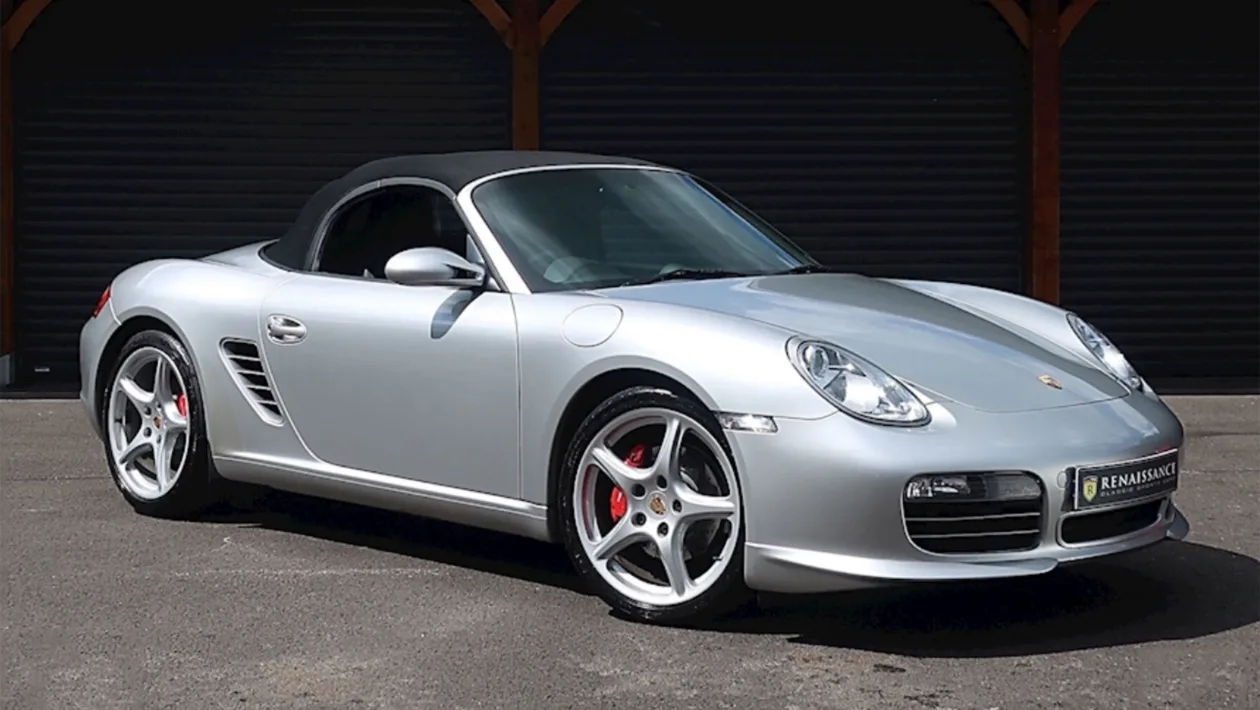
Parts availability improved during this generation, with Porsche expanding its service network and parts distribution channels. While still more expensive than mass-market brands, the 987 Boxster represented a more accessible entry point into premium sports car ownership from a maintenance perspective.
Electrical systems received careful engineering attention. Porsche worked to simplify and standardize electronic components, reducing the complexity that often led to expensive repairs in previous generations.
This approach minimized potential electrical failures and made diagnostics more straightforward. The suspension system, a critical component in sports cars, demonstrated remarkable durability.
Precisely engineered mounting points and high-quality materials reduced wear while maintaining the Boxster’s legendary handling characteristics. This meant fewer suspension-related repairs compared to earlier models.
Interior build quality continued Porsche’s reputation for premium materials and durability. Carefully selected components maintained their functionality and appearance over extended periods, reducing the likelihood of costly interior repairs.
Leather upholstery and electronic interfaces demonstrated remarkable longevity. Insurance providers and extended warranty companies recognized the 987 Boxster’s improved reliability.
Many offered more favorable terms and lower premiums, acknowledging the reduced risk of significant mechanical failures. This translated to additional long-term financial benefits beyond basic repair costs.
9. Lexus GS 350
The Lexus GS 350 represents a pinnacle of reliable luxury, delivering an exceptional balance of performance, premium features, and remarkably low long-term maintenance costs. Across multiple generations, this mid-size luxury sedan has consistently demonstrated Toyota’s commitment to durability and economic ownership.
Toyota’s engineering philosophy is fully realized in the GS 350, with a focus on creating powertrains that can withstand extensive use with minimal complications. The 3.5-liter V6 engine stands as a testament to precision engineering, delivering robust performance while maintaining extraordinary reliability.
Many owners report seamless operation well beyond 200,000 miles with only routine servicing. Electrical systems showcase Lexus’s commitment to simplified, reliable design.
Unlike many luxury competitors that incorporate overly complex electronic architectures, the GS 350 maintains a more straightforward approach. This translates to fewer potential failure points and more predictable maintenance requirements.
Transmission performance represents another highlight of the model. The eight-speed automatic transmission demonstrates exceptional durability, with precise manufacturing tolerances and advanced lubrication systems minimizing wear.
Many owners report smooth operation throughout extended ownership periods. Parts availability further enhances the GS 350’s economic advantage. Being part of the Lexus/Toyota family means replacement components are readily available, reasonably priced, and can be serviced by a wide network of mechanics.
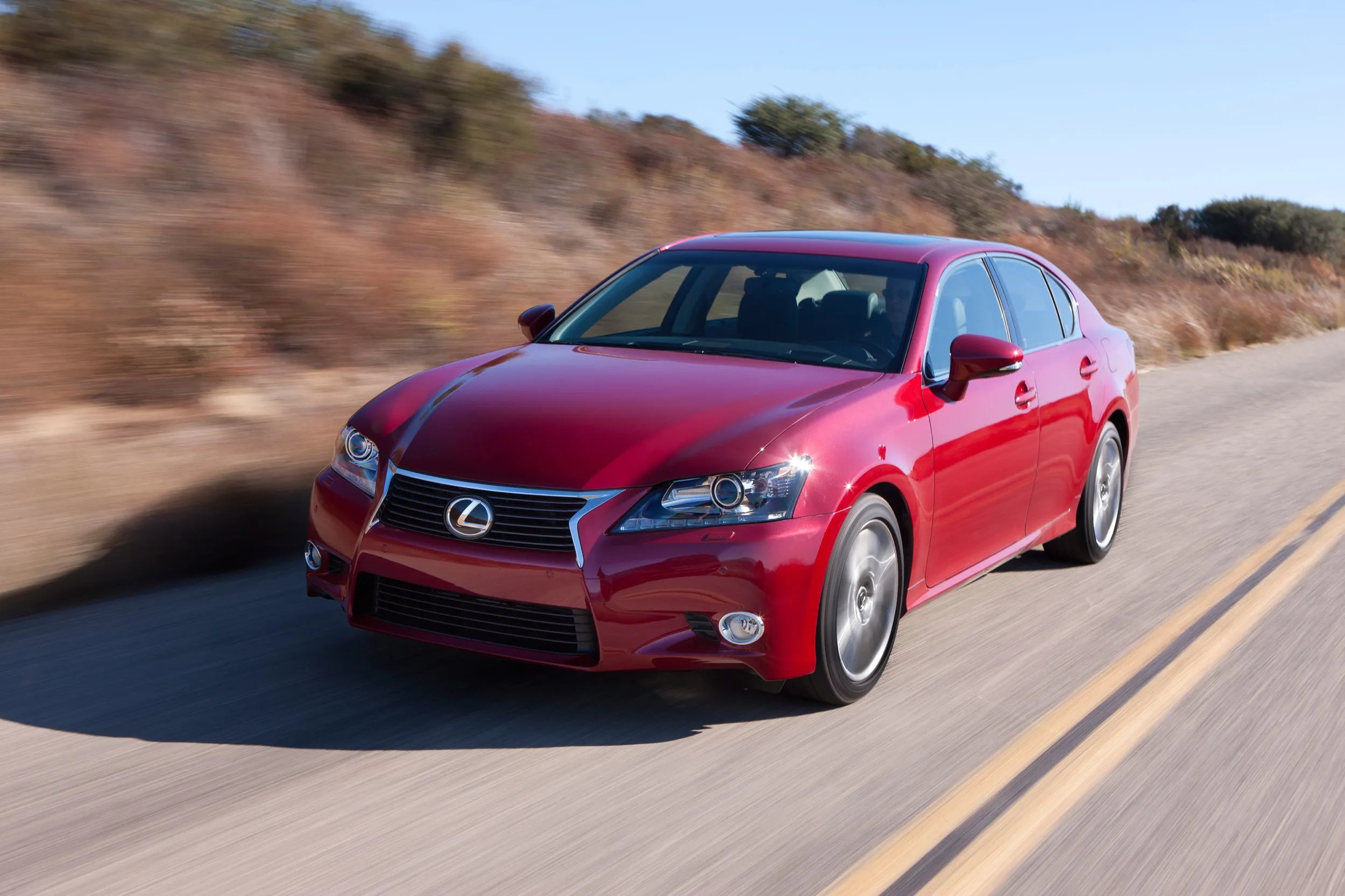
This accessibility stands in stark contrast to more exotic luxury brands. The suspension system received careful engineering attention. Advanced mounting points and high-quality materials reduced wear while maintaining the brand’s legendary ride quality.
This approach meant fewer suspension-related repairs compared to many luxury competitors. Interior build quality reinforces the vehicle’s reputation for durability.
Premium materials are selected not just for aesthetic appeal but for their ability to withstand years of use without significant wear. Leather upholstery, dashboard components, and electronic interfaces maintain their functionality and appearance.
Insurance providers and extended warranty companies recognize the Lexus GS 350’s exceptional reliability. Many offer more favorable terms and lower premiums, acknowledging the statistically proven low risk of significant mechanical failures.
From a depreciation perspective, the GS 350 maintains its value remarkably well. Potential buyers in the used market actively seek these vehicles, understanding they’re acquiring a luxury sedan with a proven track record of minimal maintenance complications.
10. BMW 3 Series (E90 Generation)
The BMW 3 Series E90 generation, produced between 2006 and 2011, represented a surprising entry in the low-maintenance luxury car segment.
While BMW is often associated with expensive repairs, this particular generation demonstrated improved reliability and more accessible maintenance costs that challenged traditional expectations.
BMW’s engineering focus centered on creating more robust and standardized components. The inline-four and six-cylinder engines were designed with improved manufacturing techniques that reduced potential failure points.
Compared to earlier generations, the E90 3 Series showed significant improvements in long-term reliability. Transmission performance stood out as a particular strength. Both manual and automatic variants demonstrated exceptional durability.
Carefully engineered with precise manufacturing tolerances, these transmissions provided seamless operation well beyond typical mileage expectations, with minimal required interventions.
The vehicle’s carefully engineered suspension and drivetrain components meant that wear and tear became more predictable and manageable. BMW implemented more standardized maintenance procedures, making it easier and more economical for owners to keep their vehicles in top condition.

Electrical systems received significant engineering improvements. BMW worked to simplify and standardize electronic components, reducing the complexity that often led to expensive repairs in previous generations.
This approach minimized potential electrical failures and made diagnostics more straightforward. Parts availability expanded during this generation.
BMW worked to create a more comprehensive parts distribution network, making replacement components more accessible. While still more expensive than some Asian luxury brands, the E90 generation 3 Series represented a more economically sensible option.
The suspension system demonstrated remarkable durability. Precisely engineered mounting points and high-quality materials reduced wear while maintaining the 3 Series’ legendary handling characteristics.
This meant fewer suspension-related repairs compared to earlier models. Interior build quality continued BMW’s reputation for premium materials and durability.
Carefully selected components maintained their functionality and appearance over extended periods, reducing the likelihood of costly interior repairs. Leather upholstery and electronic interfaces demonstrated remarkable longevity.
Insurance providers and extended warranty companies recognized the E90’s improved reliability. Many offered more favorable terms and lower premiums, acknowledging the reduced risk of significant mechanical failures.
From a depreciation perspective, the E90 3 Series maintained its value more effectively than many luxury competitors. Potential buyers in the used market actively sought these vehicles, understanding they were acquiring a German luxury sedan with a proven track record of improved reliability.
Also Read: 12 High-End Cars That Have the Least Electrical Issues Over Time

